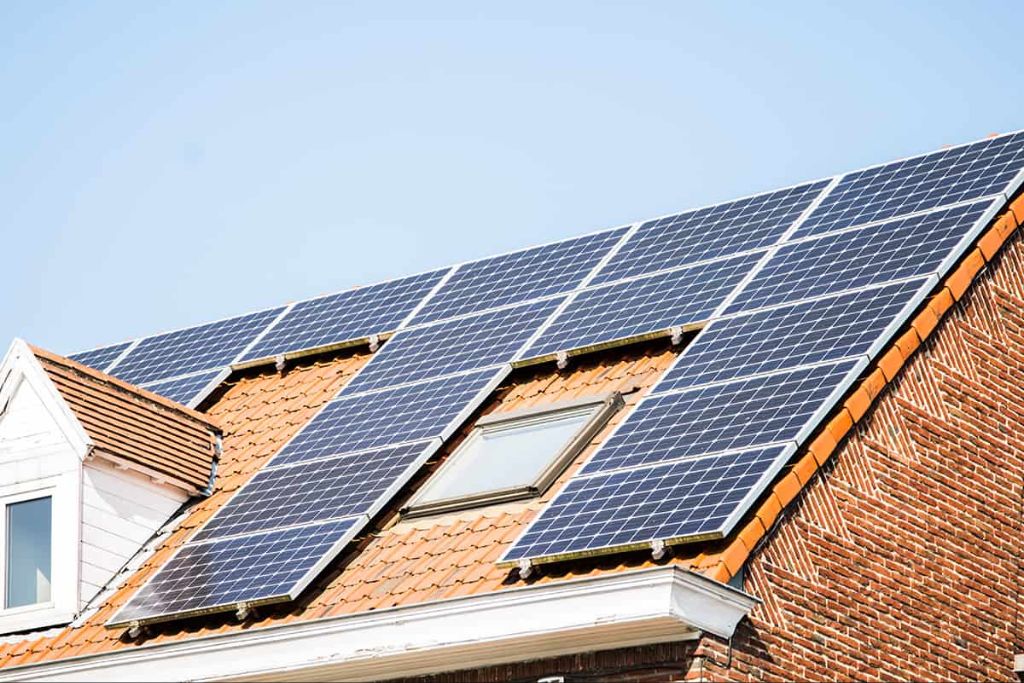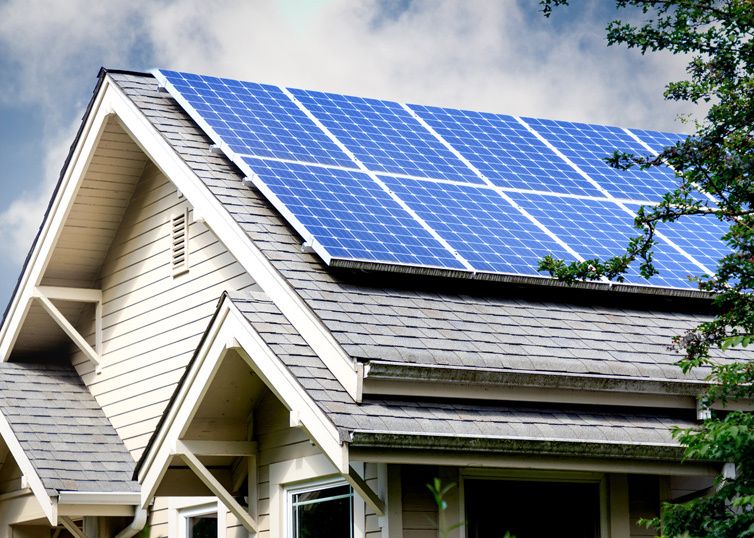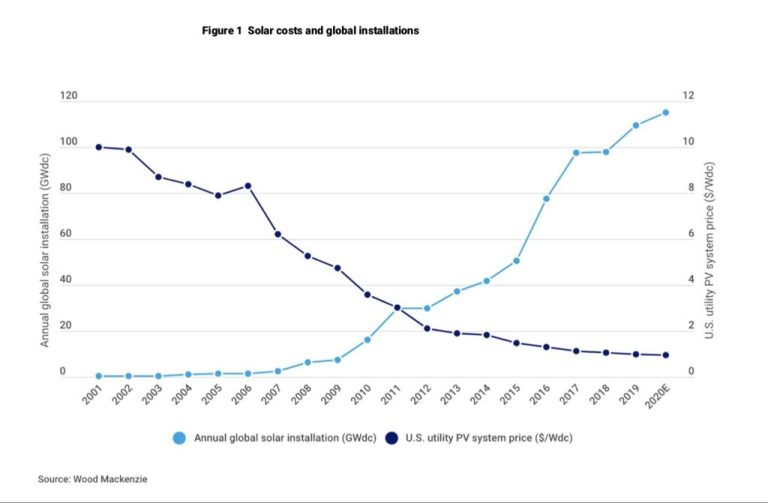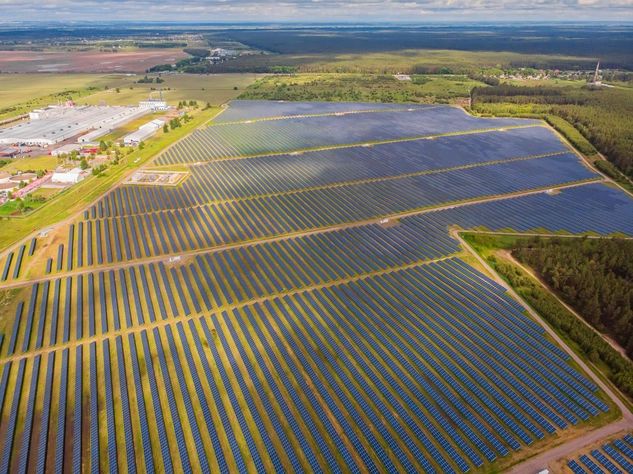Do Solar Panels Heat Up The Earth?

The potential impact of solar panels on the Earth’s temperature is an important consideration as we expand renewable energy. With climate change accelerating, understanding how energy infrastructure like solar panels affects the environment is critical. Though solar power emits far fewer greenhouse gases than fossil fuels, some claim panels may trap heat. Evaluating the science helps inform responsible policy and technology decisions. This analysis focuses on whether solar panels meaningfully contribute to global warming.
How Solar Panels Work
Solar panels work by converting sunlight into electricity using the photovoltaic effect. When sunlight hits the solar cells inside a panel, it knocks electrons loose from their atoms. The movement of these electrons generates an electric current that can be captured and turned into energy (Good Energy, 2022).
Specifically, solar panels contain photovoltaic cells made up of semiconductor materials, usually silicon. When sunlight hits these cells, the photons from the light energize the electrons in the semiconductor material. This allows the electrons to break free of their atoms and flow through the material as electricity (Maxeon, 2022).
The photovoltaic effect causes electrons to be emitted when solar radiation hits the boundary between two different semiconductor materials in a solar cell. This generates electric voltage and current. The more sunlight that hits a solar panel, the more electricity it can generate (Good Energy, 2022).
Solar Panel Materials
Solar panels are typically made of silicon, glass, aluminum, and copper (EnergySage, 2023). The most common solar cell material is crystalline silicon, either in monocrystalline or polycrystalline form. Silicon solar cells are made from silicon ingots which are sliced into wafers about 0.2mm thick. The silicon wafers are treated and assembled into complete solar cells.
The solar cells are enclosed within a glass sheet to protect them from the elements. The glass is coated with an anti-reflective material to maximize light absorption. Aluminum frames provide structural support, while copper wiring and ribbons allow electrical connections between cells (EcoWatch, 2023). Other common solar panel components include junction boxes, backsheets, and inverters.
Effects on Atmospheric Temperature
Installing solar panels can help reduce greenhouse gas emissions from electricity generation. Fossil fuel power plants release carbon dioxide and other greenhouse gases that contribute to global warming. According to a study by the National Renewable Energy Laboratory, solar photovoltaic systems generate electricity with no direct emissions of air pollutants or greenhouse gases.
Unlike fossil fuel power plants, solar panels do not burn fuels to generate electricity. The conversion of sunlight into electricity through photovoltaic cells is a clean process that does not release any emissions. Widespread adoption of solar power would displace electricity generation from fossil fuel plants, resulting in lower greenhouse gas emissions overall.
Research indicates that generating electricity from solar panels versus fossil fuels reduces carbon dioxide emissions by 0.5 to 1 pound per kilowatt-hour. Over the lifetime of a solar energy system, this avoids a significant amount of greenhouse gas emissions compared to conventional grid electricity. Therefore, solar panels can play an important role in mitigating climate change and reducing the atmospheric concentration of greenhouse gases that are warming the planet.
Solar Panel Temperature
Solar panels can get quite hot when sitting in direct sunlight, with temperatures easily exceeding 100°F or 40°C (How Hot Do Solar Panels Get? PV Temperature Explained, 2022). However, despite these high temperatures, solar panels do not actually transfer much heat to the surrounding environment.
This is because solar panels are designed to absorb light and convert it to electricity, not heat. The dark colors and materials used in solar panels are optimized for light absorption, allowing them to make use of the full solar spectrum. However, these materials have low thermal mass and emittance, meaning they do not readily conduct or radiate heat (How Temperature & Shade Affect Solar Panel Efficiency, 2023).
So while the panel itself gets hot in the sun, the heat is not dissipated effectively to the air or surroundings. Studies show that solar panels only increase ambient temperatures by 1-2°C, even in large installations (How Hot Do Solar Farms Get, 2021). The conversion of sunlight to electricity is much more efficient than absorption and conversion to heat energy.
In summary, solar panels can reach high temperatures when sitting in sunlight, but do not actually contribute substantial heat to the environment around them due to their design and materials.
Energy Balance
Solar panels provide clean renewable energy without emitting greenhouse gases that contribute to global warming. Unlike fossil fuel power plants, solar panels don’t release heat-trapping carbon dioxide when generating electricity. According to Solar Reduces Fossil Fuel Use, solar energy reduces our dependency on polluting fossil fuels that are a major cause of climate change. Widespread adoption of solar power could significantly reduce global carbon emissions from electricity generation.
One analysis found that solar panels produce 95% less carbon emissions than coal-fired power plants. Even compared to natural gas, solar panels generate 50% fewer emissions over their lifetime. This makes solar a much cleaner alternative to traditional utility power. By offsetting dirty fossil fuel energy with renewable solar electricity, we can mitigate greenhouse gas emissions that contribute to global warming.
Reflectivity Considerations
Solar panels have a relatively low albedo or reflection coefficient compared to bright surfaces like fresh snow or ice. This allows the panels to absorb solar radiation more efficiently. According to Amerisolar, typical solar panels convert around 16-20% of incident solar radiation into electricity, while the rest is converted into heat. To maximize absorption, solar panels use anti-reflective coatings to reduce glare and reflection off the glass surfaces.
The albedo of solar panels is comparable to materials like asphalt shingles, as noted in Scientific American. So in most cases, installing solar panels does not have a significant net warming or cooling effect locally. However, covering large areas like deserts with dark solar panels could decrease albedo and contribute to some atmospheric heating on a regional scale.
Large Scale Impact
Research has shown that large-scale solar power plants can raise local temperatures, creating a solar heat island effect. However, the effect is much smaller compared to urban heat islands caused by human activities and infrastructure [1]. A 2016 study found that solar panels in a large solar farm can increase local temperatures by up to 5.5°F due to heat trapped under the panels [2]. The temperature increase declines rapidly with distance from the solar farm.
While large solar farms can warm local temperatures, modeling studies indicate minimal global effects. Covering 20% of the Sahara desert with solar panels is estimated to increase global temperatures by 0.16°F [3]. The warming effect is small relative to the 1.5°C limit set by the Paris Agreement. Overall, the evidence suggests utility-scale solar farms may heat localized air but with negligible impacts on global climate.
Conclusion
In summary, based on the available research, solar panels have a negligible impact on the Earth’s temperature. While solar panels do absorb solar radiation and convert some of it into heat, the amount is minimal compared to other human-made structures like buildings and roads. The materials used in solar panels like silicon and glass have low heat absorption and emissivity. Studies on the heat island effect of large-scale solar farms find only a slight warming limited to the installations’ immediate vicinity. When considering the offset greenhouse gas emissions from fossil fuel power generation, solar power Systems have a net cooling effect on the climate. While more research can always uncover new insights, the preponderance of evidence to date demonstrates that fears of solar panels significantly heating the planet are unfounded. With prudent solar farm site selection and proper system design, solar photovoltaics can be deployed globally to help stabilize the Earth’s climate and usher in a clean energy future.
References
While this article provided an overview of the topic, here are some sources for further reading:
- Energy.gov – “Do Solar Panels Increase the Temperature of Nearby Areas?”
- Sciencedirect – “The effects of solar panel orientation and titanium dioxide coatings on solar panel efficiency and local temperature”
- Nature – “Large-scale impact of solar panels on land surface temperature and climate”
There are still open questions around solar panels’ localized and global effects on temperature. Please consult these and other scientific sources for the latest research.>






